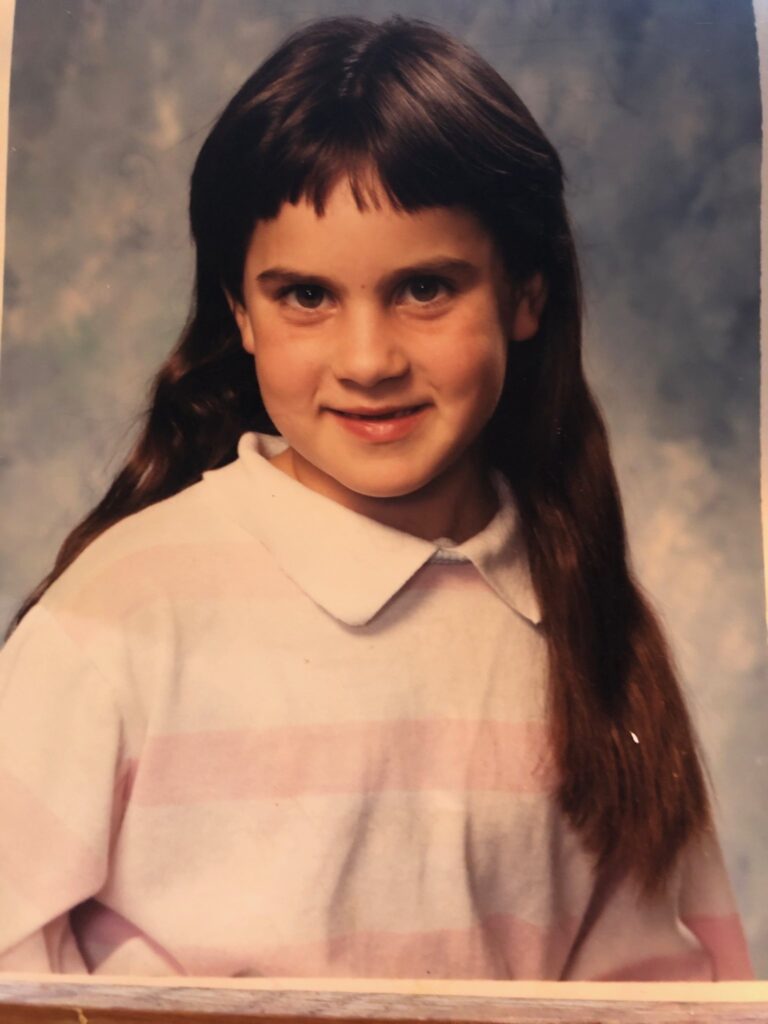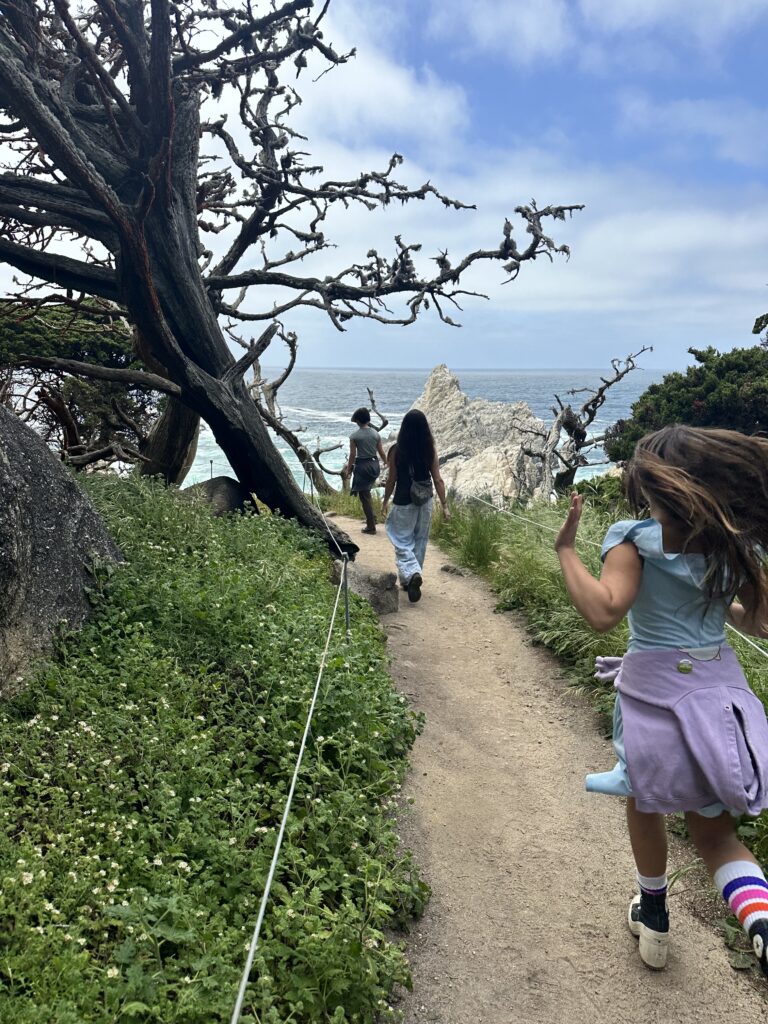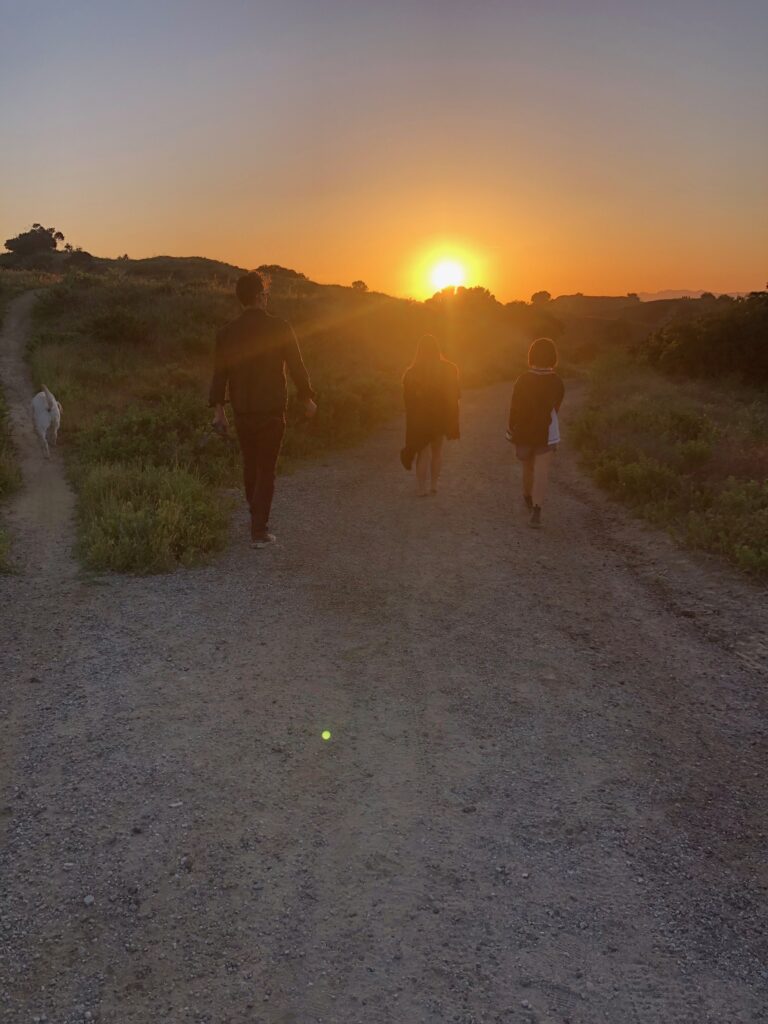On Monday, I get my hair cut. Hair cuts bring up some anxious feelings for me. Every time I go to get my hair cut, I try to act like I think a “normal person” getting their hair cut would act. I try to smile and act super casual like “oh, yeah, I’m just a typical client here definitely NOT ready to have a panic attack. Certainly not for something as routine as a hair cut.” But then, they start cutting and while most stylists want to chit chat, I have a hard time listening because I’m hyper focused on their every snip. My palms start sweating, my breathing gets shallow, my heart starts racing, and I basically spend my energy suppressing the urge to interject and call the whole thing off…or faint. Yes, faint. I have vaso-vagal syncope, but it’s socially triggered. So, that’s my body’s super maladaptive and antisocial way of handling stress. If I get queasy in a conversation (this can be from medical content that reminds me how mortal we all are or if there is an especially talkative person who doesn’t read social clues), I eventually lose consciousness and just pass out.
So, hair cuts are a whole thing. One may wonder how someone (like me) could make so many huge, drastic life changes (like moving from Vermont to Los Angeles and back again) and bold decisions (like tent camping with lions, living in an RV for 3 months at a time, or moving to a new state in a house I’ve never seen before) but yet struggle to stay chill during a hair cut.
Well, do not be misled. Despite what one may think given photos from ages 3-9, this is not from my childhood hair cuts. While my mom did give me possibly the worst hair cuts ever to don (or assault) a child’s head, I was blissfully unaware of my looks as a kid. I really took it to heart—that thing that good parents say—“beauty comes from the inside.” If my mom had named her home salon, it would have been called “what matters is what’s on the inside—we’ll make sure of it.” Or perhaps “our haircuts build character.”

I’m not even sure she used real scissors now that I’m really thinking about it. Certainly they weren’t haircutting scissors. I’m reflecting on what scissors we had around the house, and it was likely some from a pencil box from a nearby book bag.
Anyway, despite my Crayola hair cut with crooked bangs and side burns, I went through childhood oblivious to my looks, courtesy of that signature strong character that mom’s haircuts had probably developed. So, I was unafraid of changes to my appearance.
It wasn’t until college, when I started to feel lost psychologically, spiritually, and often physically (I have a famously bad sense of direction) that I got my first bad incident with a hair cut. Note: it wasn’t my first bad hair cut. It was just the first time I noticed and cared. It was the first time it was difficult.
It was drastic. I went in for an inverted bob, and I came out with—what I can only describe as—an unfortunate situation on my head. It looked like someone attacked my hair with a blender. It was supposed to be a pixie cut, but I have super coarse and thick, dark hair, so it did not conjure an ethereal pixie vibe. The vibes were closer to an Australopithecus from the early stone age who grabbed a stone flake and invented the first hair cut, maybe. But, Tinkerbell? No.
Anyway, it came at a time when my inner world felt disordered, and so having this unfamiliar hair cut made me feel like even more of a stranger to myself. It took forever to grow out, and it went through many even uglier stages as it grew out. Like a jaw breaker that changes flavor, except rather than a delightful new treat as time passes, it was a fresh horror with each surprising, new phase.
So, I really felt the consequence of that terrible, unfortunate hair cut. And because of that, now hair cuts stress me out quite a bit. It’s like I’m afraid that getting a bad hair cut will also cause an identity crisis. Though causation and correlation are very different, my nervous system doesn’t care when the stylist wraps that little cape around me, snapping me into, essentially, a cross between a poncho and a straight jacket.
The thing about change of any kind is that it can be scary to face the unknown—especially if you’ve been hurt by change before.
It helps me to look in the mirror before I go get a haircut. I assess the way my hair looks in that moment, and I ask myself: would I go into the salon and ask for this exact look? The “look” being 2 inches of split ends and a rather shapeless mass on my head with mild frizz that comes with humidity. No, I would not.
Sometimes what we currently have isn’t what we’d choose, but it feels safer to not rock the boat because it’s not a drastic change. Being the architect of change is daunting, but it’s helpful to acknowledge that change is constantly happening. So by not being the architect, you’re taking a more passive role in that change–but change is still happening to you.
As we have been preparing for a cross country move—a move from urban to rural, from Southern California to New England—the drastic nature of that change can feel daunting. But staying here doesn’t mean things would remain the same. Our dear friends in the canyon just moved, and life here feels that vacancy. My heart felt it the day that they left. I’ve moved so much I haven’t had much experience being the one who been left. It hurts. So, I offer my condolences to all of our friends and family.
Also, we are entering a new life phase. Senya is about to start high school and Juniper is starting middle school. More change.
When we moved back here to California, it was a shock to realize how much had changed in 4 years. Our friends here had all been changed by the intense political polarizations of 2020 and the pandemic. The city itself has changed. The entertainment industry is dispersing and more movies and tv shows are being made outside of LA. Streaming platforms have changed the way that writing rooms work and how writers are employed. It’s not the same Los Angeles that it was when we first moved here in 2011.
The world is changing, rapidly. Technology and climate change and corporations taking over—it’s a lot to process. I’m dating myself by reminiscing here, but I remember small toy stores and Saturday morning cartoons. Now, it’s Amazon and endless streaming. I remember buying cds and listening through the whole album to really get a feel for it. Now, I get on Spotify and get music paralysis. Then there’s our natural world; what will this earth be like when my kids are my age? Our climate is warming and weather is getting more extreme.
It could be easy to feel overwhelmed and unfamiliar in our current world. I find comfort in thinking that any living species still here has had to show an aptitude for adaptation. Adaptation is key in our survival.
I also take comfort in looking back and seeing the progress that we, as a global society, have achieved. My kid can be out and trans (nonbinary) and they are safe here in Los Angeles and I have confidence that they will be safe in Vermont, especially at the school they plan to attend (a school that has a proven record of defending their trans students). Juniper has confidence that she does not need to have a male partner to live a full and successful life. She is proudly female and has a bright, possible future ahead of her.

“Three things are true at the same time,” he added. “The world is much better, the world is awful, the world can be much better.”
–Nicholas Kristof
We cannot avoid change. But we can define our relationship to it. We can decide that we are going to grow and evolve with whatever changes occur. We can commit to the values and ideals that we hold dearest and keep them as our Polaris in the sky when all other lights go out. We can become the architects of that world that we want to see evolve. I think of how it’s Pride month and how our nation is on the brink of change. Who we elect as the next President will determine a lot of what the future holds for our society. For LGBTQIA+ people. For the climate. For peace or for war. For people with black or brown skin or of different ethnicities or nationalities. I shudder to think of the unhappy path. But we cannot despair.
“Despair is paralysis. It robs us of agency. It blinds us to our own power and the power of the earth.”
–Robin Wall Kimmerer, author of Braiding Sweetgrass
So, I will keep speaking up and out and making choices that create the world I want. That’s one reason I write.
We cannot bury our heads (no matter how ugly our hair cuts may be) and pretend that change won’t take place if we don’t confront it directly. It’s already happening. The question is: who will be the architects of that change?
So, yeah. Here’s to change. Whether that change is hair cuts, cross country moves, friends moving, marriages, divorces, the process of aging, political candidates, climate change…
may we be ready to meet the changes that happen to us with resilience, optimism, and adaptation. And may we be the wise and courageous architects of the changes we wish to make.

PS: We got the FARM!!!!

Another masterpiece. Boy I was glad you were oblivious to the haircuts I gave you as a child. Your inside was and still is beautiful….haircuts in the old days not so much. I am sorry.
Hahaha. Thank you for reading and loving it as much as I hoped you would. I laughed a lot while writing it. And seriously–those bangs!!! Were you even looking???
Yes! Eyes wide open thinking I was a talented hair technician.
hahahahaha
Congratulations!!! For so many things, all the things, even those mullets your mom gave you! 🙂 I’m excited to reconnect with you all on the east coast!
Thank you so much, Cheryl!! I am so excited to reconnect with you all on the east coast too!! I’d love to catch up soon!